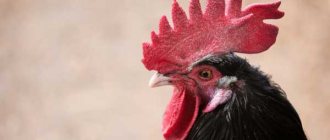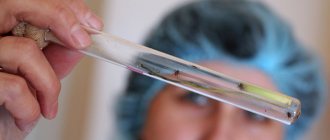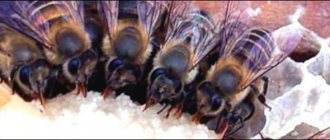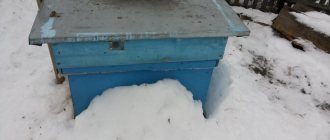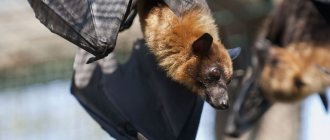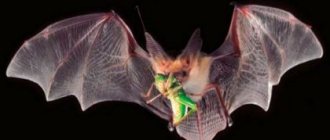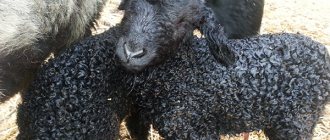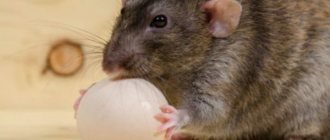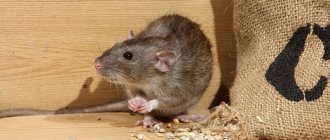A common procedure among farmers is castration of roosters. It is considered harmless if done according to the rules, and also safe for birds. The artificial removal of the gonads is also called caponation, and the castrated individual itself is usually called a capon. As a rule, they turn to professionals for help, but especially experienced farmers can do it themselves. What is the peculiarity of this procedure, how and when it is necessary to carry it out, as well as the most common methods of castration.
Why did they start castration and sterilization?
Initially, castration was carried out in order to calm the temper of especially violent individuals. The capon becomes more balanced, does not conflict with other inhabitants of the farmstead and is more attentive to the chickens. In addition, the meat of a castrated rooster is much better in terms of taste - it is juicier, tastier and more tender. The same is done with females, whose meat, after removal of the ovaries, becomes more tender, cooks faster and is more expensive.
At what age should a rooster be castrated?
The age of castration is strictly established, and if you miss the right moment, the quality of the meat, as well as the general condition of the bird, can greatly deteriorate. To comply with all standards, the procedure should be carried out at 3-4 weeks of life. In this case, the fat is distributed evenly throughout the carcass and the individual quickly gains weight. The nutritional value of meat also increases, it is considered elite and costs more. Although capons gain weight faster than ordinary individuals, they require even less food, because energy is not spent on the formation of seed.
Why castrate
Castrated roosters begin to grow actively after 7 months. And they weigh 1.5 times more than ordinary males. This occurs because epiphyseal cartilage ossifies more slowly and skeletal bones grow.
As a result, metabolism slows down. And roosters require almost half as much food.
Males walk less. And the seed stops forming. Therefore, the body spends less nutrients.
If for every kilogram of weight an ordinary rooster needs about 120 calories, then a capon needs no more than 50 calories.
Castrated males are less susceptible to diseases. Their character becomes more peaceful. The fights in the chicken coop stop.
An important advantage of castrated males is an increase in the taste and nutritional qualities of meat. It becomes more aromatic and juicy.
Famous French and Italian chefs prefer to use only capon meat in their dishes. Such products are considered elite.
Rooster castration methods
An experienced farmer is able to carry out the procedure independently. It is not classified as complex or dangerous and can be carried out using several methods. Depending on the method chosen, recovery of the betta may take from several hours to several days.
Basic methods
The most common method of caponization of cockerels is ligation or crushing of the testes. With this approach, the gonads resolve on their own. Another popular method is surgical removal, which requires special skills and is not recommended for inexperienced farmers to do on their own. There is a high risk of damaging major blood vessels, causing the bird to bleed out and die.
There is also chemical castration, which involves the administration of a special drug by injection or by drinking. It is worth remembering that during surgical removal it is extremely important to completely remove the testis, since even from a small fragment it can recover and continue to function.
You may also be interested in the article: “Why trim the spurs of a rooster and how to do it yourself?”
Other methods
Among all methods, surgical resection is considered the most effective, but in different countries the procedure is performed using different technologies. For example, extraction of cockerel testicles in Russia occurs through the groin area behind the right rib. In China, removal occurs through the abdominal wall behind the last rib. In Germany, veterinarians make an incision in the ventral part of the abdomen. In the USA, specialists remove the genital organ through an incision in the space between the ribs.
Historical reference
Why did they start castration?
Many years ago, peasants slaughtered the most pugnacious roosters of the egg type. They were problematic due to their capricious nature and were expensive to raise. But farmers soon discovered that capons have many advantages over ordinary cockerels.
Castration began to be carried out in ancient times. Food was prepared from the tasty meat of capons, and the birds themselves were used as brood hens. They warmed the testicles just like chickens, and then took care of the young, protecting them from enemies.
When and who
The first procedure was carried out in China over 2 thousand years ago. The practice was quickly adopted in Babylon, Greece, and Rome.
Back in the 4th century BC. Aristotle wrote about eating castrated cockerels.
In the Middle Ages, Europeans began to carry out the procedure, having learned about it from farmers in Persia and Armenia. English breeders in the 15th century added the meat of castrated birds to the vats where beer was brewed.
In Russia, capons were produced on an industrial scale even before the revolution.
The practice of castration of roosters was also widespread in the Soviet Union. In the mid-20th century, birds were castrated en masse.
Home or professional castration?
Many poultry breeders are wondering what to do - try to perform castration themselves, or seek the services of a specialist. But even if the farmer has extensive experience in carrying out the procedure, there is still a risk of harming the cockerel. To avoid trouble and not lose the bird, it is better to entrust the procedure to an experienced veterinarian, especially if the farmer is just starting his journey. Only in this case can a positive outcome and preservation of the health of the individual be guaranteed.
How to castrate a rooster?
Carrying out castration in itself requires attention and experience, and it is also worth devoting time to preliminary preparation. Both the success of caplination and the recovery process will depend on this.
You may also be interested in the article: “The rooster started pecking the chickens - why and how to stop it?”
Preparation
A day before the procedure, the cockerel is separated from the livestock, they stop feeding it and only give it water in unlimited quantities. The area between the breast bone and the anus is removed from feathers by cutting them off. The bird's paws and wings are fixed with a weight of half a kilogram, after which the bird turns over on its side. The incision site is treated with alcohol iodine tincture. The cockerel is given the drugs atropine and xylazine intravenously in the required dosage determined by the veterinarian. Local anesthesia is given to the incision site.
Cut location
When the bird is secured and the incision site has been pre-treated, the procedure can begin. To make an accurate cut, the veterinarian counts the last gap between the ribs and smoothes the feathers against growth, moistening them generously with water to free up space for manipulation. An incision is made with a scalpel in the upper part of the intercostal space, and here it is extremely important to do everything carefully and accurately, otherwise there is a high risk of damaging the artery. In the hole that appears, into which the expander is inserted. To ensure that the wound does not close, the serous membrane can be seen; the veterinarian tears it apart with a special surgical instrument.
Removal of testes
In the wound, just above the kidneys, the testes will be located. Sometimes they may not be visible due to the intestine in front of them. In addition, the testes themselves are small in size, so you should immediately take care of establishing good lighting. Having clamped the testis with surgical forceps, the veterinarian unscrews it in one motion. The same thing happens with the second one. It is important to completely remove the organ, otherwise it will regenerate and continue to function.
You should also carefully monitor the procedure so as not to touch an important vessel. Otherwise the bird will bleed to death and die.
Complications
If the procedure was performed by an experienced specialist, then most likely no complications will arise. It is extremely rare to develop subcutaneous emphysema - an accumulation of air. In this case, you can pierce or cut the affected area and, with a light massage, release the air accumulated under the bird’s skin. If you carry out the procedure under all conditions, do not forget to sterilize the incision site and instruments, then everything should go well.
Postoperative actions
The operated male is separated from the livestock until complete recovery. To get him back into shape as quickly as possible, he is given light food, such as oatmeal, some grain, and constant access to fresh water. Inspection of the wound and its treatment must be carried out at least 3 times a day using peroxide, boron or ichthyol ointment. In the summer, it is also recommended to sprinkle the wound with streptocide powder. A few days later, when the wound has completely healed, you can return the bird to the herd.
How does a rooster's behavior change after surgery?
Many farmers are categorically against the operation, because after it the behavior of the rooster changes dramatically. An active and cheerful bird becomes apathetic and distant. Her liveliness awakens only at the sight of food, which she pounces on greedily. The capon's appearance also changes: its tail droops, its neck stretches forward, and its comb and earrings turn pale. The feathers are no longer shiny and less elastic than before.
The generally graceful and proud bird becomes sad, focused solely on food. Capons gain weight quickly and are easier to fatten. Such a rooster will no longer defend his part in front of other inhabitants of the farmstead, and even a grown-up chicken can offend him. These risks need to be understood before spaying your rooster.
Classification
There are two types of sterilization:
- partial
- complete.
Partial leads to disruption of the endocrine or generative functions of the male body. With complete castration, both functions stop working. The discovery of a bilateral testicular tumor and prostate cancer becomes a reason for testicular castration in adult men.
Castration for medical reasons
Prostate cancer is one of the medical conditions for which castration surgery is permissible. In many cases, tumor development occurs under the influence of testosterone and dihydrotestosterone.
The growth of normal and pathogenic cells occurs due to these hormones. Therefore, treatment of prostate cancer is possible due to a decrease in testosterone levels in the body. Read more about testosterone preparations in the pharmacy here.
The decision to use a specific type of anesthesia is made only by the attending doctor together with the patient and anesthesiologist. Fortunately, many cases of prostate cancer can be treated with enucleation. In this case, only the testicular parenchyma is removed.

